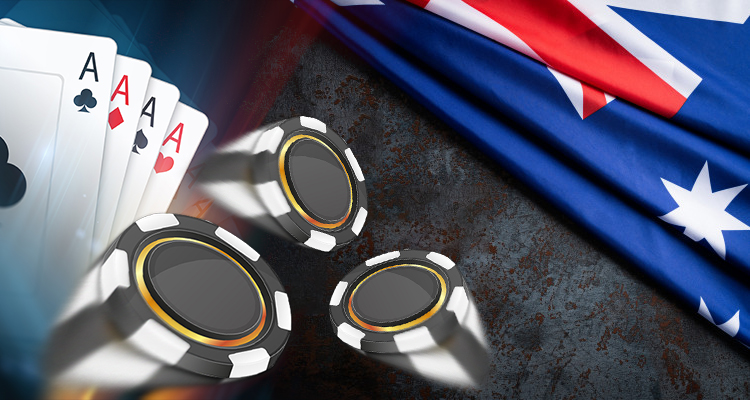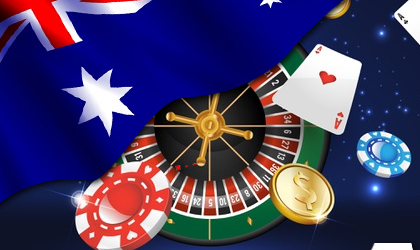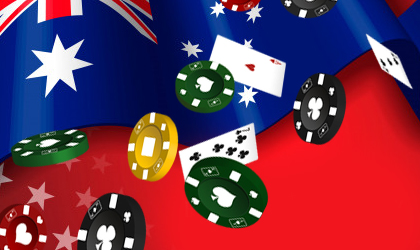Significant trends in Australian Gaming

Andrew MacDonald 05:32 Feb 21st, 2006 Australia
Over the past several years many changes have occurred within the Australian gaming markets.
A brief history to bring you up to date on the size and nature of the markets may be useful.
Legalised casino gaming began in Australia in 1973 when Wrest Point Casino opened in Hobart, Tasmania. Wrest Point was a small 40 table casino modelled on the English Clubs of the time. Hobart was at that time a city of approximately 200,000 inhabitants. The Casino had been approved to stimulate tourism, employment and economic development generally within the State. Operated by the Federal Hotels group, the casino was well regulated and controlled and turned out to be a major success for them. Federal Hotels were later successful in establishing small casinos in Darwin, Launceston and Alice Springs between 1979 and 1982. The first wave of casinos were all small table game casinos situated in outlying population centres in Australia.
 The second wave of casino openings began in late 1985. Three major urban casinos opened in a two-month period. Burswood opened in Perth, Western Australia, a city with approximately 1.2 million inhabitants. The Adelaide Casino opened in Adelaide, South Australia, a city of approximately 1 million people. Conrad Jupiters opened on the Gold Coast, 83 kilometres south of Brisbane in Queensland, a city with approximately 1 million people. Both Burswood and Jupiters opened with over 100 table games and 750 gaming machines in American resort style complexes, while Adelaide opened with 100 table games in an elegantly refurbished Railway Station building.
The second wave of casino openings began in late 1985. Three major urban casinos opened in a two-month period. Burswood opened in Perth, Western Australia, a city with approximately 1.2 million inhabitants. The Adelaide Casino opened in Adelaide, South Australia, a city of approximately 1 million people. Conrad Jupiters opened on the Gold Coast, 83 kilometres south of Brisbane in Queensland, a city with approximately 1 million people. Both Burswood and Jupiters opened with over 100 table games and 750 gaming machines in American resort style complexes, while Adelaide opened with 100 table games in an elegantly refurbished Railway Station building.
This second wave of casinos moved away from the previous model based largely on the British Gaming Act and system and adopted the New Jersey regulatory model. This highly regulated model with very prescriptive internal control systems was adopted on the basis of ensuring that the "toughest controls in the world" were in place to eliminate any chance of corruption or criminal activity occurring in these large urban casinos. Granted monopoly licences within their States these casinos prospered and proved to be highly lucrative to both the operators and the State Governments of the time.
The next wave of casino openings began in 1994 with the major urban centres of Melbourne, Sydney and Brisbane all opening casinos in the heart of their cities within approximately a year of each other. These casinos are now some of the largest in the World. As an example, Melbourne's Crown Casino has a licence to operate 350 table games and 2,500 gaming machines. Generating AUD$750 million in revenues from its gaming operations, the complex is a true World of Entertainment, with 17 bars, 35 restaurants, 40 retail outlets, 14 screen cinema complex.
Australia now has 13 casinos operating in every State and Territory in the country.
In the first and second waves of casinos being introduced, they were established without gaming machines or in some cases with video gaming machines which offered only Video Blackjack, Draw Poker or Keno. States were initially reluctant to introduce spinning reel gaming machines due to moral and social concerns about their appeal to the lower socio-economic groups who could not afford to gamble. Casinos had been established to stimulate tourism, employment and economic development. Gaming machines were not considered politically acceptable in the 70's and 80's, except in New South Wales where a thriving poker machine industry had been established from 1956 in registered non-profit community clubs.
Government attitudes towards gaming machines changed considerably in the early 1990's as a consequence of both a nation wide recession and the positive experience with legalised, well regulated casinos. State governments pressured for funds turned to introducing gaming machines throughout their States. By the mid -1990's gaming machines were well established with most States introducing machines into clubs, pubs and hotels. The tax revenues being generated were a politically palatable form of consumption tax and the machines were eagerly accepted by the general population.
Approximately 180,000 gaming machines now operate in a country with 18 million people. At 1 machine for approximately 100 people the ratio demonstrates the phenomenal market opportunity should this ever result in the U.S.. With only 1 device for every 500 people currently, the market could grow 5 fold if all the U.S. States were to adopt the Australian market profile.
 The introduction of gaming machines into venues outside of the existing casinos significantly reshaped the market. Casinos in Queensland and South Australia had existed under virtually monopoly conditions for 8 to 10 years and found it difficult initially to adapt to the new conditions. Gaming revenues dropped by 20% or greater as people were drawn to more convenient locations in the suburbs. In Adelaide the impact was most significant with the government adopting a "level playing field" approach in relation to gaming machines. Both the casino and other operators operated under the same tax regime, return to player percentages and regulatory principles. With a free market model the casino was at a significant disadvantage in relation to the pubs and hotels in the State due to the proximity and convenience benefits attached to the latter. Tax rates were initially high set at 4.2% of turnover or handle. With a maximum hold of 15% this equated to over 28% of net win in comparison to the 20% rate that had formerly applied to the Casino where the average hold was more like 10%. Thus, the new tax was considerably higher than that which had previously applied.
The introduction of gaming machines into venues outside of the existing casinos significantly reshaped the market. Casinos in Queensland and South Australia had existed under virtually monopoly conditions for 8 to 10 years and found it difficult initially to adapt to the new conditions. Gaming revenues dropped by 20% or greater as people were drawn to more convenient locations in the suburbs. In Adelaide the impact was most significant with the government adopting a "level playing field" approach in relation to gaming machines. Both the casino and other operators operated under the same tax regime, return to player percentages and regulatory principles. With a free market model the casino was at a significant disadvantage in relation to the pubs and hotels in the State due to the proximity and convenience benefits attached to the latter. Tax rates were initially high set at 4.2% of turnover or handle. With a maximum hold of 15% this equated to over 28% of net win in comparison to the 20% rate that had formerly applied to the Casino where the average hold was more like 10%. Thus, the new tax was considerably higher than that which had previously applied.
In Queensland by contrast the casinos were protected with differing tax regimes and product advantages. The return to player in Queensland pubs and clubs was set at 85% or as close as practical thereto. For the casinos the return was greater at 90% or higher. This meant that the product offered in the casinos was much lower in relative price from the player's perspective.
Tax rates in clubs and hotels were also set much higher and were again based on turnover. This effectively "restricted" the investment that these venues could make into their facilities and marketing promotions. Also the regulator stipulated what product went into which venue. Therefore, while there was an initial impact on Queensland casinos the public quickly returned to the casinos after trialing the new venues. This took approximately six months to realise, with the impact on business during that time causing the casinos to reshape into more "locals" oriented facilities.
In the mid-1990's competition was fierce. Gambling was readily being adopted by all State Governments and casinos were under pressure from gaming machines, lotteries, Statewide Keno and the new mega-casinos in what for some had been major feeder markets. (Melbourne had been a feeder market into South Australia and Tasmania, while Sydney had been a feeder market into Queensland).
The performance of many of the older casinos deteriorated considerably and the market began to change.
The new mega-casinos, however, prospered. Situated in large cities and housed initially in temporary facilities, the casinos performed exceptionally well, catering to a pent up demand for gaming. These casinos' stock prices went on a roll, making startling gains following listing. The transfer to permanent and more costly facilities, however, unfortunately coincided with the beginning of the Asian crisis. The mega-casinos cost in excess of $1 billion to build and had high levels of staffing and infrastructure costs. High start up costs and changing markets brought about restructuring and the resultant poor financial results saw stock prices tumble. By early 1998 all Australian casinos seemed to be in some difficulty. Even those casinos that were not heavily reliant on the Asian market suffered due to being linked with the sector and the negative publicity in the financial press. Jupiters was a prime example of this impact. Even though less than 10% of Jupiters Ltd EBITDA could be attributed to the Asian market, its stock price was heavily impacted by the concerns over the Asian crisis. Jupiters Ltd had successfully diversified with several casinos, Statewide Keno and a well devised "locals" campaign yet it's stock fell by around 30% in line with many of the other major casinos in the region who were much more reliant on the Asian market.
The effect of the Asian crisis on some of the casinos was, however, truly significant. Crown Casino in Melbourne had quickly established itself as the number one facility catering to the high-end Asian customer. Adopting a market penetration strategy, Crown offered the best of everything. High commissions, liberal cheque cashing arrangements, high table limits and a range of services second to none. After opening the permanent facility in May 1997, Crown was generating approximately $3 billion in turnover from Asian high rollers every month. When the Asian financial crisis hit in late October 1997, that run continued for several months as it appeared the Asian high rollers "fiddled while Rome burnt".
 Yet by February reality hit home for the Asian "whales". Crown's monthly turnover from Commission Based Play dropped from $3 billion a month to just under $1 billion. Crown's share price which under a year earlier had been around $3 had gone into free fall and by the middle of 1998 was heading towards a low of 30 cents. Crown had however, long beforehand started to recover. Restructuring of the business to re-size its operations had already occurred and the Asian market had also plateaued and was starting to return. First quarter '99 turnover of $2.6 billion was followed by turnover of $3.3 billion and $3.8 billion in the subsequent quarters. The most recent quarter showed far better results, which while still well down on pre-crisis numbers demonstrated a strong recovery in the region.
Yet by February reality hit home for the Asian "whales". Crown's monthly turnover from Commission Based Play dropped from $3 billion a month to just under $1 billion. Crown's share price which under a year earlier had been around $3 had gone into free fall and by the middle of 1998 was heading towards a low of 30 cents. Crown had however, long beforehand started to recover. Restructuring of the business to re-size its operations had already occurred and the Asian market had also plateaued and was starting to return. First quarter '99 turnover of $2.6 billion was followed by turnover of $3.3 billion and $3.8 billion in the subsequent quarters. The most recent quarter showed far better results, which while still well down on pre-crisis numbers demonstrated a strong recovery in the region.
This evidence of recovery is accentuated when one also considers the impacts of increased competition from Vegas and within the region. With tumbling share prices many gaming companies who a short time earlier had been considering acquisitions now became targets. Unlike the U.S., however, there has been no real signs of true industry consolidation occurring. In the U.S. we have seen the emergence of the mega-casino corporations. Hilton buying Bally's, Grand Casinos and most recently Caesars to turn Park Place Entertainment into an industry giant. Likewise Harrah's acquiring Showboat and The Rio to also become an industry behemoth. With acquisitions and developments there are now seemingly six major industry players in casino gaming, Park Place, Harrahs, Mandalay Bay Group, Mirage Resorts, Trump and MGM Grand. On the other side of the Pacific, we have Crown/PBL, Star City/TABCORP, Jupiters Ltd and the Federal Hotels Group. The only true consolidation coming from the TABCORP purchase of Sydney's Star City Casino from Harrahs who had acquired the property as part of their U.S. based Showboat deal. Consolidation will likely occur in Australia in the future as stock prices improve and the industry once again gains favour. What seems to have prevented this is the fact that all casino stock prices were hammered by the Asian crisis with only gaming companies such as TABCORP prevailing due to its regional gaming machine base and strong continued earnings. All other predators become prey during the last two years. In the future with new strong owners it is likely that the larger companies will seek to establish country wide brand identity and will also seek to utilise the technologies they develop to gain efficiencies in other operations.
Already Star City and Crown both utilise Table Game management and surveillance systems that are at the leading edge of gaming technology.
Crown introduced ESS (Electronic Surveillance Supervisor) throughout its Southbank operation on opening in May 1997. This system introduced digital cameras and recording for use by Pit personnel. The digital cameras are housed within "lollipop" signs at the tables, which display the games minimum bet limit. These are connected to the recording and replay facilities in the Pit. Should the player query a result, payout or chip ownership, then the Pit Boss has the capacity to instantly review the recorded digital image and advise the player accordingly. Sensors on the table enable the game events to be logically separated so that time is not wasted searching for a result. If the player says "three hands ago" then it is possible for the Pit Boss to quickly recover the appropriate result. This technology, along with other Table Games management systems has allowed Crown to effectively reduce its supervisory ratios from 1 Game Supervisor watching 4 Blackjack tables to 1 watching up to 8 tables. For Roulette the ratio decreased from 1 to 2, to 1 to 4 and so on for other games. This modified supervision leads to substantial efficiencies, with Crown saving $10 million annually in labour costs as a consequence. Star City's comparable system, which followed the developments at Crown, is called PitCam and has resulted in similar gains in efficiency.
Crown also led the way in introducing the "paperless" pits by implementing its ATOM system on Table Games. ATOM is an "Automated Table Operations Management" system that handles table financial management requirements such as openers, closers, fills, credits and CPV's as well as player ratings.
A touch screen tabletop device is associated with each table or group of tables and allows the Game Supervisor and dealer to handle all normal pit requirements. For player ratings, for example, a player hands the dealer their Crown Club Card, which is swiped at the table by the dealer to record time in. The player's card is then placed in a rack associated with their position at the table. On the player leaving, their card is returned after the dealer again swipes the card to record a time out. On main floor games this results in the player being awarded an amount of points based on the game type and table minimum unless their average bet exceeds $200. In this case the Games Supervisor manually enters the average bet ensuring that higher level players are adequately rewarded and recognised. Whilst the ATOM system has many other benefits, it essentially automates all standard manual processes used in a Pit.
In Star City the equivalent of Crown's ATOM is called PitTrak. Both systems offer many benefits over their manual counterparts and have lead to real efficiencies in both operations. Both ATOM and PitTrak are fully integrated into the casinos slot management system. For Crown that system is integrated into both SYCO, a patron database management system, and the DACOM slot management system. For gaming machines in Crown a state of the art bonusing system also applies. This slot bonusing system enables Crown to offer numerous jackpots and bonuses on individual games across machine banks and across the entire casino floor. This system has recently been installed at Mandalay Bay in Las Vegas. Technological advances have led to both improved efficiency and advanced effectiveness in casino marketing programs.
 However, these major technological advances, whilst leading to cost efficiencies, have also resulted in some H.R. management issues particularly in casino table games. Both Star City and Crown have recently introduced projects aimed at creating a greater attachment between dealers, game supervisors and managers. Crown's efforts have led to Zone Management, which has broken down a 350 table game operation into 5 distinct zones. Each Zone has a manager and between 4-5 Shift Managers. Dealers, Game Supervisors and Pit Bosses are attached to an individual Zone to provide a sense of ownership and accountability over the business unit, as well as consistent management practices. Star City's equivalent is Project Edison, which creates "communities" within Pits. The purpose of these initiatives is to ensure that an adequate performance management system exists for the relatively high ratios of frontline staff to managers.
However, these major technological advances, whilst leading to cost efficiencies, have also resulted in some H.R. management issues particularly in casino table games. Both Star City and Crown have recently introduced projects aimed at creating a greater attachment between dealers, game supervisors and managers. Crown's efforts have led to Zone Management, which has broken down a 350 table game operation into 5 distinct zones. Each Zone has a manager and between 4-5 Shift Managers. Dealers, Game Supervisors and Pit Bosses are attached to an individual Zone to provide a sense of ownership and accountability over the business unit, as well as consistent management practices. Star City's equivalent is Project Edison, which creates "communities" within Pits. The purpose of these initiatives is to ensure that an adequate performance management system exists for the relatively high ratios of frontline staff to managers.
The most significant trends in Australian gaming are therefore consistent with trends around the world.
- Political acceptance of gaming as a palatable form of consumption tax.
- A rapid expansion of gaming opportunities, as moral and social concerns are also broken down.
- A resultant dramatic increase in competition for gaming operators who had either existed under monopoly or duopoly conditions.
- Compounded problems as a result of the Asian economic malaise.
- Market failures as a consequence of the dramatic market changes resulting in restructuring or acquisition.
- Technological advances increasing operational efficiency and effectiveness.
- Human consequences of change being addressed resulting in restructuring of labour management practices.
Other factors of interest, which will be covered more extensively later, are the emergence of policies in Australia regulating Internet gaming and the Federal Governments interest in gaming by commissioning the Productivity Commission report which is similar in some respects to the NGISC report in the US.
On This Page



